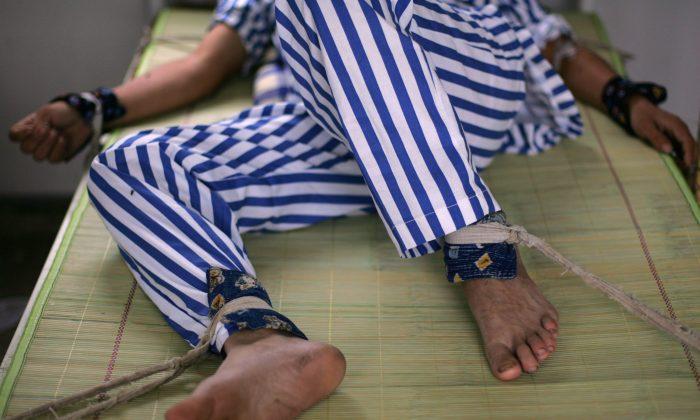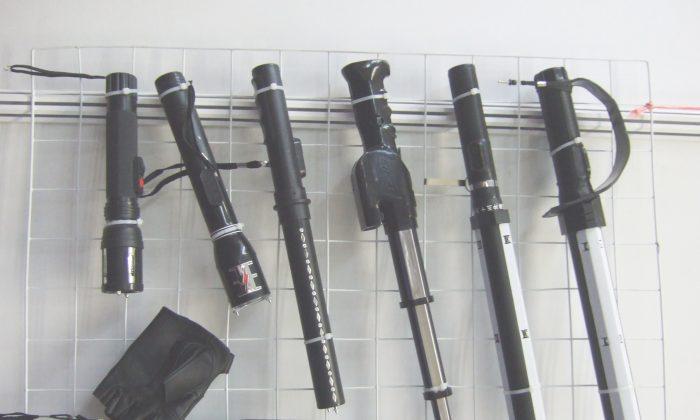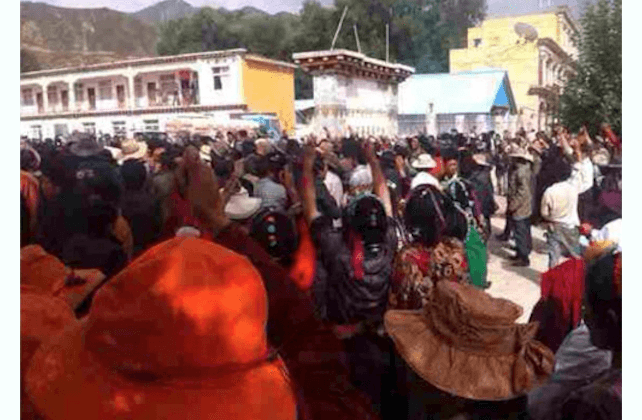An alternative account of the recent incident that left several Uyghurs dead says that Chinese police armed and barricaded themselves inside the police station, while locking Uyghur auxiliary police outside, then shot into the group of protesters from upper windows.
Regular policeman Ekber Yasin, on duty during the attack on Siriqbuya police station in Kashgar prefecture, told Radio Free Asia (RFA) that police chief Liu Cheng distributed weapons to the Chinese police officers in anticipation of an incident following the arrest of two Uyghurs, but distributed no weapons to the Uyghur auxiliary police at guard posts outside.
After the Uyghur attackers broke through the station’s glass front doors, police chief Liu ordered a set of metal doors inside the building locked, so the protesters returned to the courtyard, witnesses told RFA.
The Chinese police retreated upstairs and fired on the attackers from the second floor of the station, killing a number of them, according to RFA. The survivors then turned on the auxiliary policemen in retaliation, killing two and injuring a third, who later died in hospital. The police called in a SWAT team, who shot the remaining Uyghur attackers.
“Actually, the attackers likely did not want to kill the auxiliary policemen, as they left them behind when they passed the guard post. They only returned to the auxiliary policemen after they were unable to enter the building because the doors were locked,” a witness told RFA , speaking on condition of anonymity.
Condemning the police for barricading themselves in the station, the father of one of the dead auxiliary police lamented, “How could they leave them alone with no guns? My heart broke when I heard that my son tried to enter the building as the attackers came after him, but couldn’t enter because the doors were locked.”
“By locking the doors, they guaranteed their own safety and endangered that of the auxiliary policemen,” he said. “Police chief Liu Cheng aimed to protect the Han Chinese policemen, including himself, by locking the door of the office building during the attack,” he went on to say.
In a different account, three eyewitnesses told the Uyghur American Association (UAA) that some young Uyghur men went to the township police station on Nov. 16 to demonstrate against the harsh security measures in Seriqbuya. They were frustrated at indiscriminate searches and severe beatings following an April incident that left 21 dead, the witnesses said.
“It is clear from our interviews with people in Siriqbuya who witnessed the entire incident that the Chinese government’s account should be treated with deep suspicion,” said UAA president Alim Seytoff in a statement from Washington, DC.
“Given the account provided by the eyewitnesses, the Chinese police conducted a series of extrajudicial killings of Uyghur protestors that necessitate further investigation. We simply cannot accept the Chinese government version of this event and move on. State violence against Uyghurs is only intensifying; by uncovering more information beyond the scant details given by Chinese police, we can end this tragic pattern.”
Police spokesman Yasin told RFA, “It is true they could not enter the building, as we had locked the doors, but we supported them by shooting at the attackers from the windows of the building. Only two auxiliary policemen were killed [during the incident] and four injured—the rest successfully escaped or stayed hidden.”




Friends Read Free